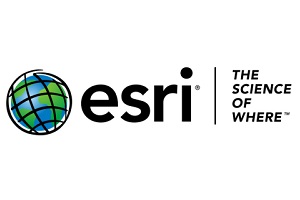Esri and ROSHN join forces to bring geospatial technology to Saudi Arabia’s real estate development

Redlands, United States – ROSHN, the Kingdom of Saudi Arabia’s national real estate developer, backed by the country’s public investment fund (PIF), supports government efforts to increase the rates of homeownership while delivering high-quality living standards. The Saudi Arabia developer builds communities that look both to the nation’s heritage as well as evolving resident aspirations. To support its vision and ongoing projects in the region, ROSHN has signed a memorandum of understanding (MOU) with Esri, the global provider in location intelligence.
The agreement enables ROSHN to adopt Esri’s suite of geographic information system (GIS) products and solutions to improve the planning and development of 200 million square meters of sustainable neighborhoods across Saudi Arabia.
“This is an incredibly exciting development for ROSHN and the wider real estate sector,” says Sabah Barakat, ROSHN’s chief operating officer. “As well as deploying the latest GIS applications in the development of ROSHN’s new communities, we will also be collaborating with Esri to advance the concept of GIS within Saudi Arabia, including the design of commercial products to be used in the domestic market.”
ROSHN’s first project, SEDRA, located just south of King Khalid International Airport in Riyadh, is a walkable community, with green spaces, cycle tracks, hospitals, medical centres, schools, mosques, and retail outlets. Access to Esri’s GIS technology will allow ROSHN to better plan projects like this by enabling staff to analyse and visualise developments geospatially to see how projects impact the surrounding environment, determine whether they meet community needs, and build them more efficiently.
“This is an opportunity to positively impact the architectural, engineering, and construction (AEC) community by recommending geospatial technology best practices and exposing AEC industry processes to the latest geospatial tools and products across Saudi Arabia,” says Adel Bolbol Fernandez, Esri’s regional public sector lead. “This will also support the transformation and development of geospatial practices and adoption of data standards within the region.”
This MOU also aims to further enrich local contractors’ knowledge of those GIS best practices, which play a key role in the nation’s Vision 2030 for developing local businesses. Barakat also says “this will empower local supply chains and place the Kingdom at the forefront of a crucial technology.”
To learn more about how AEC professionals can use Esri’s GIS technology, visit Esri.
Comment on this article below or via Twitter @IoTGN
